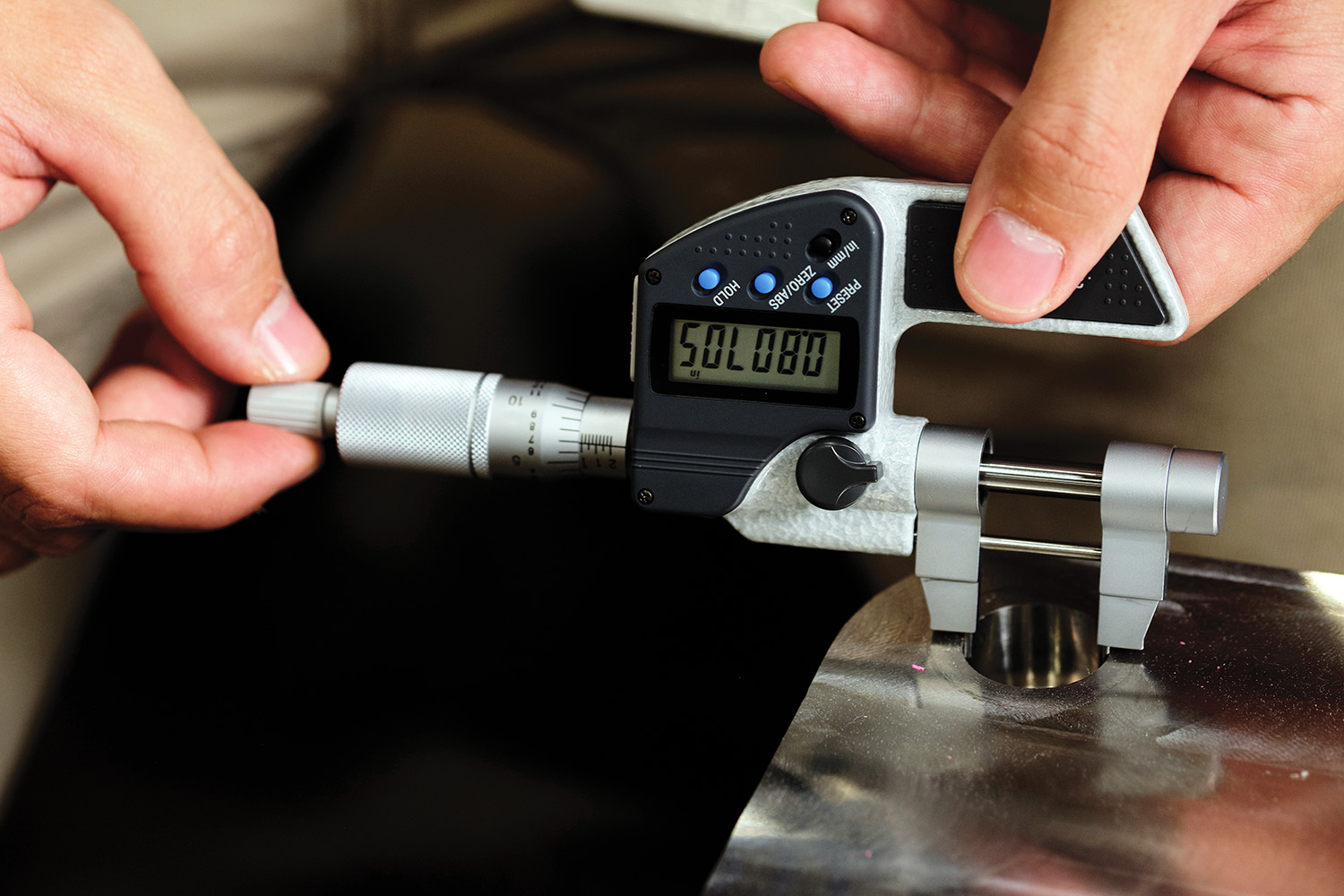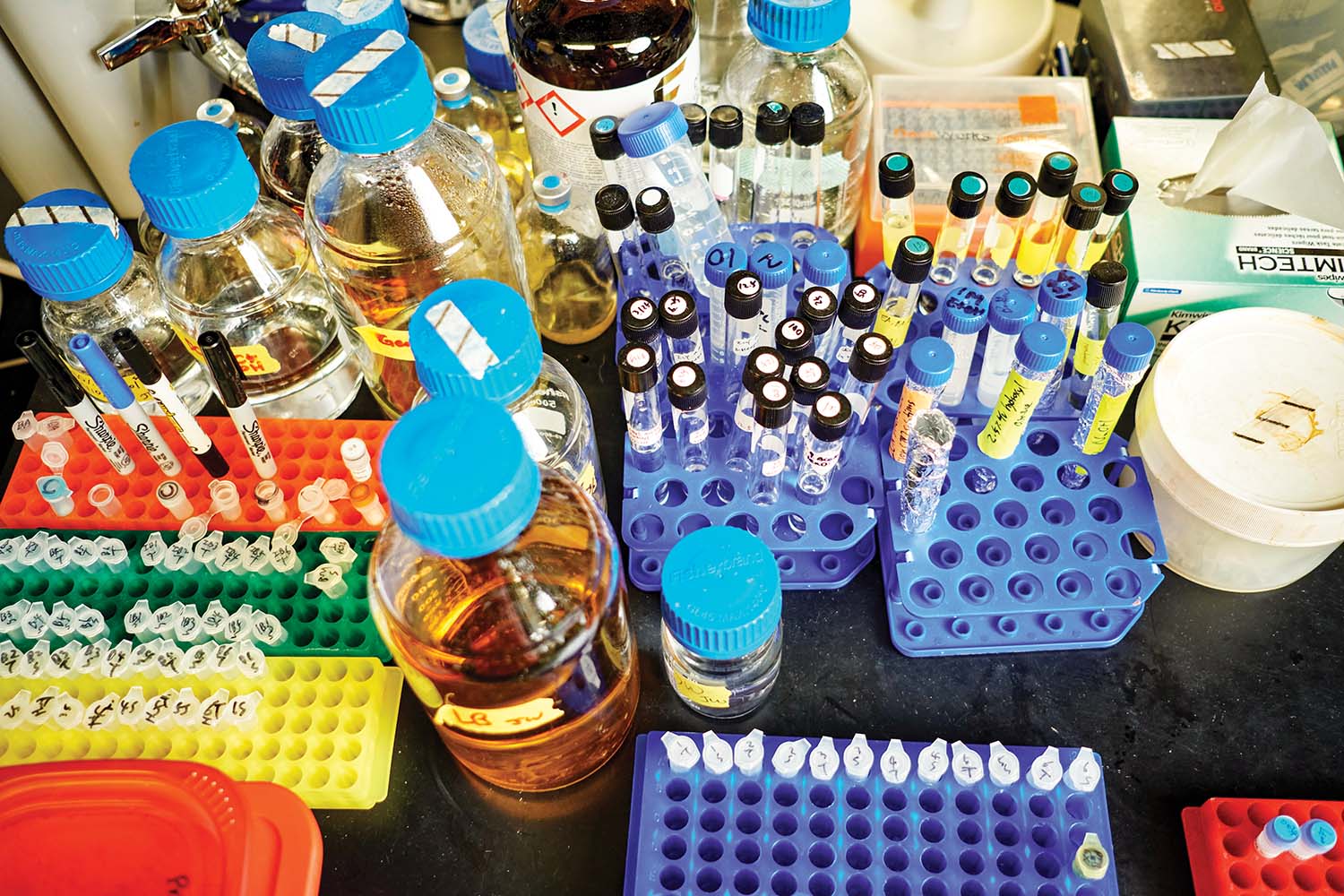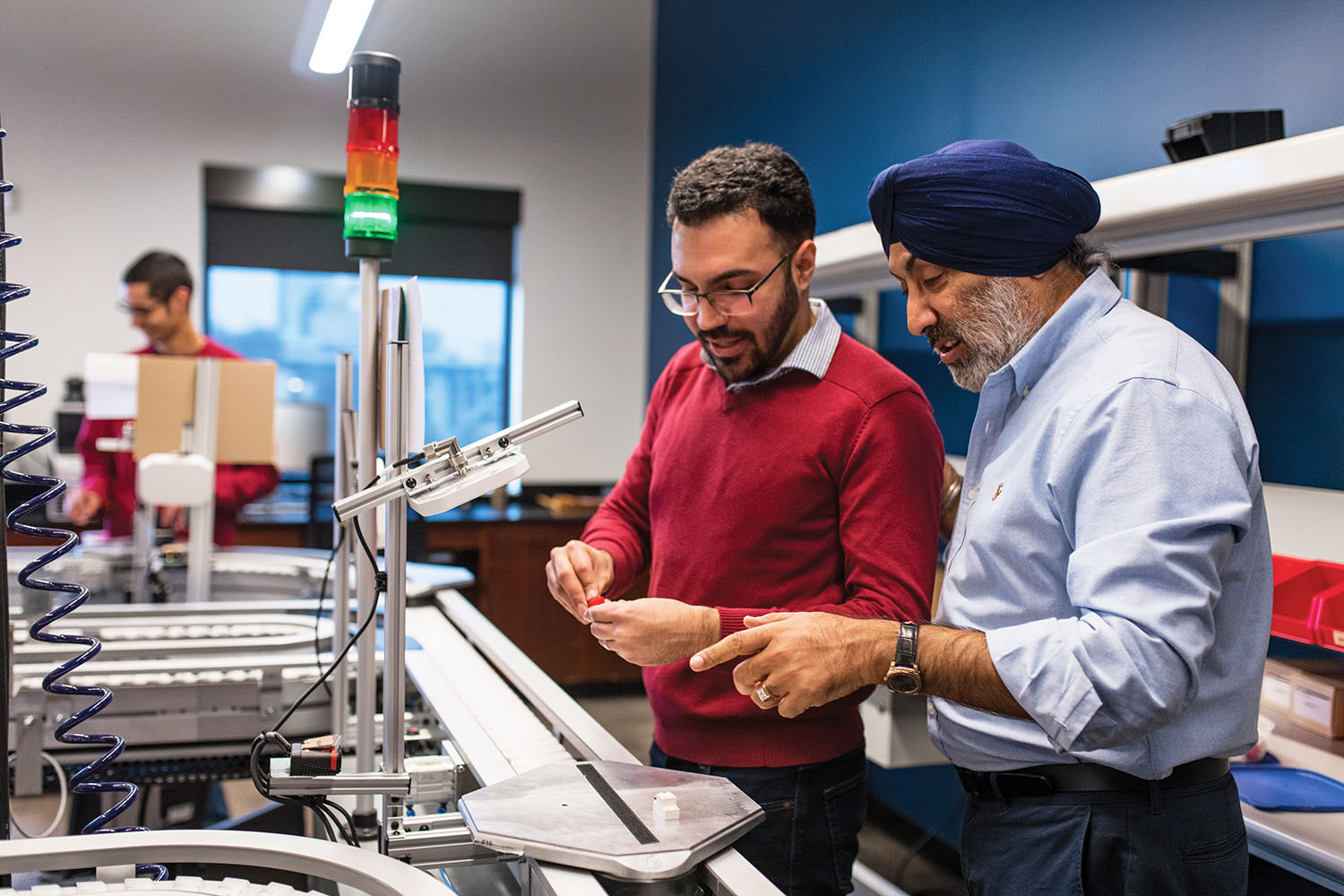
Cooking Up Something with Salt
Just as a baker can add ingredients to keep a sourdough starter active indefinitely, spent nuclear fuel can be added to fuel salt in a molten salt reactor (MSR) along with more fresh fuel salt. This grows the in-core fuel salt volume and will eventually double the size of the original fuel salt, allowing another core to be started with the excess fuel.
Research Assistant Professor Ondrej Chvala and doctoral student Alex Wheeler (both NE) set out to present an alternative to spent nuclear fuel storage, which is critical for public acceptance of nuclear power as a climate change solution. Using computer modeling, Chvala and Wheeler showed what the initial implementation of a sourdough-style refueling in molten salt reactors might look like.
The method highlights how MSRs can effectively solve two problems at once, providing a source of clean, renewable energy while mitigating the need for disposing of high-level nuclear waste.

Paving the Way for a Sustainable Future
A new type of sustainable pavement under research by Assistant Professor Nick Zhou and Edwin G. Burdette Professor Baoshan Huang (both CEE) aims to integrate de-icing, self-sensing, and microwave-induced self-healing to provide a cost-effective, efficient, and reliable solution to safety, mobility, and resilience challenges on bridges and roadways in winter weather.
A cooperative agreement of $430,000 from the US Department of Energy’s Office of Fossil Energy and Carbon Management and an additional $107,500 from other sources will support the research with a total of $537,500 over 18 months. One of the goals of FECM’s Carbon Ore Processing Program is to support research and development for projects utilizing coal or coal wastes that are outside traditional thermal and metallurgical markets, like this sustainable pavement concept.
The main ingredient in the aggregate is a low-cost domestic coal-derived solid carbon, which can be used to build and improve asphalt pavements while utilizing coal resources.

SEAMTN is Off and Running
The Southeastern Advanced Machine Tools Network (SEAMTN) has found early success under the leadership of Professor Tony Schmitz (MABE). Headquartered at UT, partners include Oak Ridge National Laboratory’s Manufacturing Demonstration Facility, Consolidated Nuclear Security, Y-12 National Security Complex, Pellissippi State Community College, and Roane State Community College.
It was founded to produce next-generation machine tools and smart manufacturing processes, create a vibrant education and training pipeline to recruit and prepare the future workforce, and integrate academic, government, and corporate partners. It also aims to address machine tool vulnerabilities that impact US defense manufacturing, national security, and economic prosperity.
Initially, the goal is having more than a thousand visitors per year per site across three sites. SEAMTN also offers online instruction at no cost, with a goal of 500 registrants per year. The network is committed to improving diversity, seeking to have at least 25 percent of participants in its school and college programs from underrepresented groups.

Getting a Vehicle Charged, Wirelessly
A research team led by Associate Professors Hua “Kevin” Bai and Daniel Costinett (both EECS) has been working with automotive supplier Magna to design an integrated electric vehicle charger with a wireless charger. The power electronics box designed by the team will enable EV drivers to select any charging mode they like, while will greatly reducing the charger’s size and cost by integrating parts.
Magna will mount the charger on a converted pickup truck and park it over a charging pad to see whether it will charge the onboard battery wirelessly. Magna will also plug the test truck into the grid and see whether it can charge the battery conductively.
Once the vehicle demonstration is done, the team will help Magna generate a more professional version of the charger, cleaning up any design errors, packaging it more compactly, and bringing it closer to a finished product.

Big Changes Coming to Biofuels
A project aimed at producing the next generation of biofuels, led by Ferguson Faculty Fellow and Associate Professor Cong Trinh (CBE), was selected for $1.1 million in funding from the US Department of Energy as part of a $45 million push to investigate the next generation of biofuels and bioproducts.
Trinh’s work in collaboration with the US Department of Agriculture and Oak Ridge National Laboratory will help researchers better understand, control, and manipulate Bacillus coagulans, a bacterial species commonly used as a probiotic that has also shown promise in converting biomass into usable products such as bioesters.
Those bioesters, in turn, are readily available for widespread use as sources of fuels and high-value chemicals such as flavors, fragrances, and solvents. The research could open up even more possibilities for the use of Bacillus coagulans in engineering and production for biomanufacturing and health application.

UT, CNS Partner to Align Productivity and Retention
A partnership between UT’s Center for Advanced Systems Research and Education and Consolidated Nuclear Security will help enhance organizational productivity in a manner that also enhances organizational talent.
Heath Faculty Fellow in Business and Engineering Rupy Sawhney (ISE) is UT’s lead on the project, which is focused on designing work in such a way that employees leave in an improved state of mind.
Aligning organizational productivity with the well-being of employees is a significant challenge for leaders faced unrelenting pressure for organizational performance. The solution is designing reliable and resilient systems that enhance system throughput and reduce employee effort and stress. This approach ensures that employee motivation, engagement, and cultural alignment are integrated into the system design.